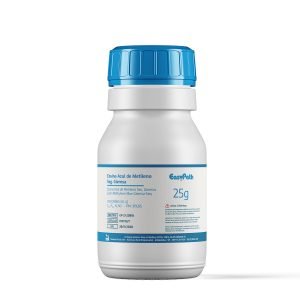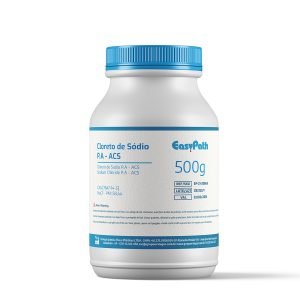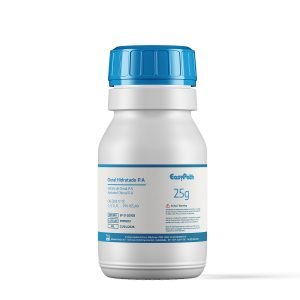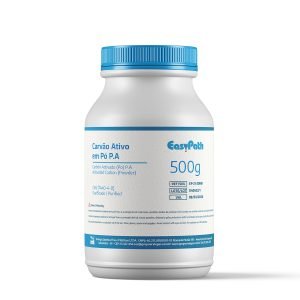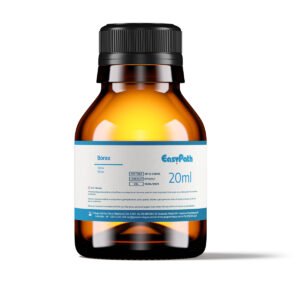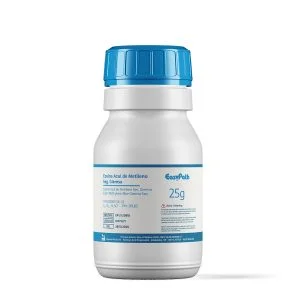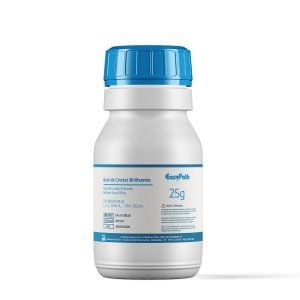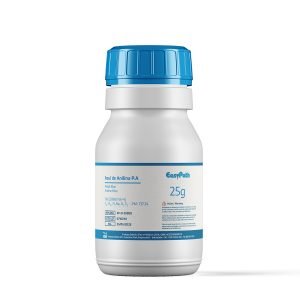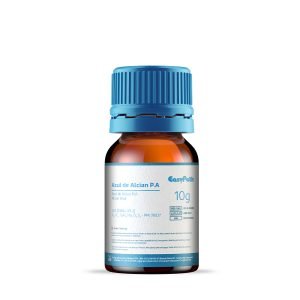-
- Highly soluble in water, facilitating chemical preparations.
- It has antimicrobial properties, ideal for preserving cultures.
- Effective as a disinfectant on surfaces and laboratory equipment.
- Used as an intermediate in various organic syntheses.
- High purity, meeting the required analytical standards.
-
- Acid dye ideal for staining in histology and microbiology.
- Stable in aqueous solutions, guaranteeing consistent results.
- Used in staining techniques such as Gram and cell staining.
- It has many applications in scientific research beyond microbiology.
- It meets regulatory standards, guaranteeing safety and efficacy.
-
- Dye used in histology and microbiology to stain cells.
- Provides clear evidence of cell structures and microorganisms.
- Easy to apply to microscopy slides, facilitating visualization.
- Used in laboratory diagnostics and clinical analysis.
- Available in 25g bottles, ideal for small and medium-sized laboratories.
-
- Salt of EDTA, used as a chelating agent in laboratories.
- Important for removing unwanted metal ions from solutions.
- Used in various applications, including chemical and biological analysis.
- High purity, ensuring reliable results.
- Available in 500g jars, suitable for large quantities.
-
- Stabilized form of EDTA, used in chemical analysis.
- Effective chelating agent for removing metal ions.
- Used in the preservation of biological solutions and chemical reactions.
- Available in 500g bottles, ideal for laboratories that require efficiency.
- Consistency and quality guaranteed in laboratory applications.
-
- A chelating agent widely used to bind metal ions.
- Important in analytical and biological chemistry for stabilizing solutions.
- Used to remove metal contaminants from samples.
- Available in 500g bottles, suitable for high-demand applications.
- High purity, guaranteeing reliable analysis results.
-
- Inorganic salt widely used in laboratories and industries.
- Important in the preparation of aqueous solutions and preservatives.
- It is used in chemical reactions and is an essential component in many analyses.
- Easy to handle and highly soluble in water.
- Available in 500g bottles, ideal for meeting laboratory demands.
-
- Gold salt used in chemical analysis and staining in histology.
- Metallization agent in electron microscopy techniques.
- Used in electronics manufacturing and nanotechnology research.
- Photographic properties, used in development processes.
- Available in 1g bottles, ideal for specialized applications.
-
- Organic compound used as a solvent and in the production of other chemicals.
- Used in laboratory preparations and in the pharmaceutical industry.
- Sedative and anesthetic properties, used in medical research.
- Reactive and should be handled with appropriate precautions.
- Available in 25g bottles, ideal for use in small quantities.
-
- Excellent adsorbent, used to remove impurities from solutions.
- Used in liquid purification and decolorization processes.
- It has a high specific surface area, increasing its effectiveness.
- Available in powder form, making it easy to mix and apply in solutions.
- Used in water treatment and pharmaceutical applications.
-
-
- Effective reducing agent, used in various chemical reactions.
- Used to preserve biological samples.
- Soluble in water, making it easy to use in aqueous solutions.
- Important in the preparation of organic and inorganic compounds.
- Available in 500g bottles, ideal for laboratory applications.
-
- Versatile dye used in histological and microbiological staining.
- Provides clear evidence of cell structures and microorganisms.
- Easy to apply to microscopy slides.
- Used as an antiseptic in some medical applications.
- Available in 25g bottles, ideal for small and medium-sized laboratories.
-
- High quality dye: Excellent for staining tissues and microorganisms.
- Availability: Presented in 25g bottles, ideal for different volumes of use.
- Various applications: Used in histology, microbiology and as an antiseptic.
- Clear visualization: Facilitates the identification and analysis of cell structures.
- Laboratory safety: Approved for use, guaranteeing safety in applications.
-
- High quality dye: Ideal for laboratory applications in histology and microbiology.
- Suitable volume: Available in 25g bottles, making it easy to store and use.
- Effective identification: Provides clear visualization of cells and tissues, ideal for microscopic analysis.
- Safety in use: Approved for laboratory use, with non-toxic properties.
- Accurate results: Guarantees consistent, high-quality staining for reliable diagnoses.
-
- Organic dye: Classified as CI 42755, guaranteeing effectiveness and reliability.
- Ideal volume: Available in 25g bottles, perfect for laboratory applications.
- Identification of structures: Effective in staining tissues, facilitating histological analysis.
- Versatility: Applications in histology, the textile industry and paper products.
- Accurate results: Provides clear and consistent staining in various laboratory processes.
-
- Specialized dye: Classified as CI 74240, guaranteeing its effectiveness and quality.
- Ideal volume: Presented in 10g bottles, perfect for laboratory applications.
- Identification of structures: Effective in staining mucopolysaccharides and glycosaminoglycans.
- Versatility: Used in various staining techniques in histology and cytology.
- Precise results: Clear and reliable staining, essential for diagnoses in pathology.
-
- Synthetic dye: A high-quality dye for various laboratory applications.
- CI classification: Identified as CI 42750, guaranteeing its purity and quality.
- Versatility: Ideal for use in microbiology and histology.
- Practicality: Available in 25g bottles to suit different needs.
- Water solubility: Excellent solubility, making it easy to use in aqueous solutions.



